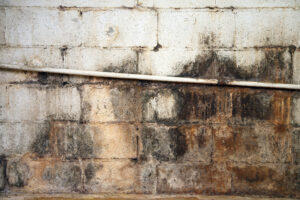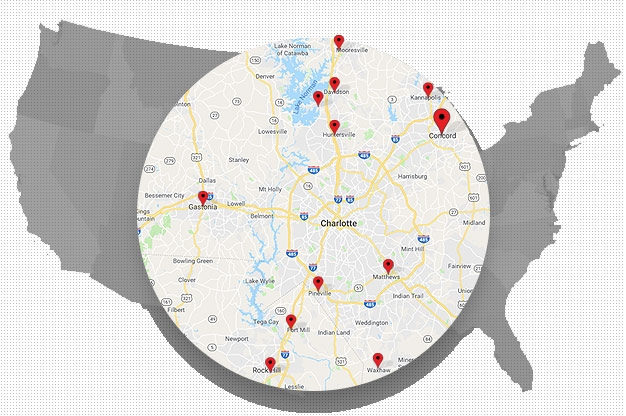A Homeowner’s Guide to the Risks of White Mold in a Crawl Space (and What to Do About It!)

When was the last time you had a good look around your crawl space or basement? Is it possible that one or two horrors might be hiding in plain sight?
Environments like these are naturally humid, so white mold could be present and dangerous. What potential harm could it pose, to your house and health?
For starters, studies have estimated that 21% of asthma cases are relatable to mold. Read on, and we’ll break down everything you need to know about these harmful fungi.
What Is White Mold?
In defining what it is, it’s going to be useful to highlight what it isn’t. White mold isn’t a specific type of mold, since many types of mold appear white, especially in their initial development. The color of the mold comes from several factors, including its source of food.
What is important, is the fact that all mold is harmful, although some are more harmful than others. The bottom line is, that until a mold species has been identified, it should always be treated as toxic and hazardous. This is because visual identification is not enough – only a lab can decide what species of mold is present.
Is It Something Else?
You’re in your crawl space and white mold seems like a probable conclusion, but could it be something else? If there’s no musty or damp smell and the white substance is on a stone surface rather than wood, it could be a mineral deposit. We refer to this as efflorescence, and the salt deposits come from moisture.
If you mist a little water over it, it should disappear as it dissolves. While this may not be mold, it indicates the presence of moist conditions, which are a perfect breeding ground for mold.
Another possibility is mildew. While similar to mold in many ways, it is only a surface fungus, so it’s easily cleaned with a household product. Mold tends to be more fuzzy or even slimy.
What Are the Risks?
Mold cells are usually present in both indoor and outdoor air. This is normal and typical levels do not normally cause negative health effects to healthy individuals. When these mold cells (mostly spores) find water and food, they proliferated and release many more spores into the air.
Even in healthy individuals, this increase in airborne spores can irritate the airways and eyes. Certain species of mold may release toxins that cause further harm. If someone in the household has an immune disorder, like an overactive or underactive response, symptoms may present.
Responses to mold include an allergic illness, similar to “hay fever” or asthma. If you inhale live mold, a respiratory infection may develop and additional toxic effects may occur from high levels of certain molds.
If symptoms are present, you might want to get the mold tested by a lab to help guide medical treatment.
How Do I Remove It?
If you’re wondering how to get rid of white mold in your crawl space, you’ll need to assess the size of the problem. With a small emerging issue, you might be able to take care of it yourself, but you should not attempt anything over 30 square feet.
Use Personal Protective Equipment (PPE), even for small jobs. You’ll need an N95 mask, gloves, and googles as a minimum since mold in the air can be as much as 10 to 1,000 times higher during removal/cleaning.
If the mold is on soil, and only a few square feet, you can dig down an inch to remove the affected area. After removal of the dirt, consider the installation of a plastic vapor barrier to help prevent reoccurrence.
Bleach may kill the mold but it doesn’t prevent the spores from being airborne and you don’t want to use bleach on porous materials. This action starves the mold of its food source.
Porous or Non-Porous?
Discard porous materials affected by mold, unless it affects only a small area. This includes:
- Carpets
- Ceiling tiles
- Bedding
- Upholstered furniture
- Insulation
- Wallboards
Mix a solution of water and detergent, put on PPE, and lightly mist the mold first, as this will help control the dust. Bag or cover the moldy item in plastic when transporting for disposal and clean the area with a damp method, like mopping.
You can clean non-porous and semi-porous items, like metal and wood. Mix a detergent solution as above and mist the affected area while wearing PPE. Use soap (non-ammonia) or detergent with hot water to scrub moldy surfaces, or use a commercial cleaner instead.
Rinse the surfaces with clean water and use a wet-dry vac if available. For better results, a disinfectant solution can be applied to the surface for several hours, but be sure to follow directions on the product label. Use a dehumidifier and fans to speed drying.
Will It Come Back?
Unless the source of water is dealt with, the white mold will inevitably return. This is why it’s essential to check thoroughly for leaky pipes and proper external drainage.
To create an environment that is unfriendly to white mold, you’ll want the air to be less than 60% humid, preferably below 50%. A dehumidifier can be installed in the crawl space to aid this goal and can be connected to a drain for continuous use.
Hidden mold will require a professional, so if your crawl space has a musty smell but you can’t visually identify the source, you might need a professional. Once wooden beams have been cleaned, consider having them coated with a fungicidal sealant
If despite your efforts, the white mold returns, it might be time for professional crawl space mold remediation.
Prevent White Mold
We’ve shown how white mold should be removed, and the importance of finding and rectifying the moisture source. Don’t let the water back in – An ounce of crawl space mold prevention is worth a pound of cure!
If you’re a homeowner in North Carolina, we can help you waterproof your crawl space, basement, or foundation. We also install sump pumps.
Contact us today for a free estimate.
Learn more about Sedona Waterproofing Solutions.
Recent Posts
- How Crawl Space Encapsulation Benefits the Environment – An Expert Guide
- 6 Ways Professionals Keep Your Crawl Space in Top Shape
- Structural Repair Solutions for Crawl Spaces, Basements, and Foundations
- Essential Crawl Space Repair Tips Every Homeowner Should Know
- The Importance of Radon Mitigation: Ensuring a Safe Living Environment for Homeowners
Categories
- Basement Mold
- Basement Waterproof Foundation
- Basement Waterproofing
- Crawl Space Dehumidifier
- Crawl Space Encapsulation Cost
- Crawl Space Repair
- Crawl Space Waterproofing
- Encapsulation
- Foundation Repair
- Foundation Waterproofing
- French Drains
- Leaky Basement
- Mold Remediation
- Mold Removal
- Radon
- Slab Jacking
- Sump Pump
- Uncategorized
- Vapor Barrier
- Water Leak
- Waterproofing
- White Mold
Archives
- June 2024
- May 2024
- March 2024
- January 2024
- June 2023
- May 2023
- April 2023
- March 2023
- February 2023
- January 2023
- December 2022
- November 2022
- October 2022
- September 2022
- August 2022
- July 2022
- June 2022
- May 2022
- March 2022
- February 2022
- January 2022
- December 2021
- November 2021
- October 2021
- September 2021
- August 2021
- July 2021
- June 2021
- May 2021
- April 2021
- March 2021
- February 2021
- January 2021
- December 2020
- November 2020
- October 2020
- September 2020
- August 2020
- July 2020
- June 2020
- May 2020
- April 2020
- March 2020
- February 2020
- January 2020
- December 2019
- November 2019
- October 2019
- September 2019
- August 2019
- July 2019
- June 2019
- May 2019

